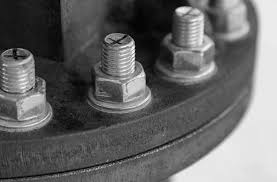A tightened form of bolt displays elastic properties and behaves like a spring to work in an effective form. The analogy of spring is attributed with the application of load once the bolt stretches. An attempt is made to reach on to its original length where compressive force emerges among the joint members.
When it comes to the torque value for bolt tightening there is an application of elongation to the elastic range. It is going to increase once more loads are applied to it. This would be a further extension of load where the bolt would be taken to a point and it fails. It is termed as ultimate tensile strength. At this additional point of UTS if you apply additional force to the bolt it would eventually break down. So as to prevent any type of bolt failure it is necessary to focus on
- The bolt grade
- The type of equipment being used
- The operation would be applying the correct form of bolting methods
The benefits of bolting techniques
A controlled form of bolting technique is bound to possess controllable inputs. For the operator correct calculations are vital and the necessary tool settings would contribute to the ease of use.
How consistent is the bolt loading is the second point of consideration. It is a critical component on any type of joint that would be having caskets. Even a consistent form of compression would be vital for preventing damage and allowing the cascade to function optimally.
When it comes to the safe operation relating to the torque tightening of bolts it is going to eradicate the unsafe actions of manually controlled tightening procedures. A set of skilled operators are essential to follow specific procedures. If you are able to replace the manual effort with bolting tool it may increase productivity by reducing the tightening time and the efforts of an operator. The skilled operators follow a set of given procedures to achieve a desired level of consistency. Make sure that the correct assembling and tightening of the joints occurs for the first time. The reason is that it might go on to save time along with resources.
The specifics of tensioners
With a hydraulic tensioner most of the applications may be tensioned. But in case of applications where there has to be multiple bolts that you need to tension a suggestion is for the operator to be using a hydraulic tensioner for each other or it can be the fourth bolt. When it is circular fringes to be increasing productivity, there is a suggestion of four types of hydraulic tensioners to be used. The method of tensioner which you use gives an idea on how to close the flange properly. It is done in an effective or a safe manner when you resorted to the use of single tensioner.
The process of tightening starts when you lubricate the bolts and the nuts and it is followed by hand tightening when you compare against the flange.
